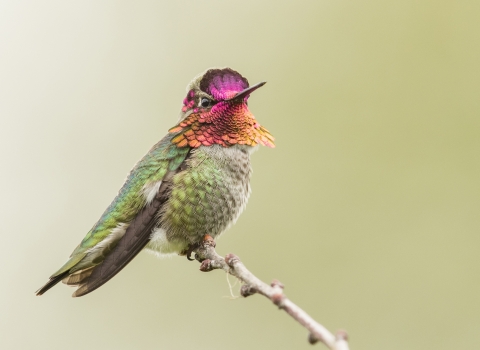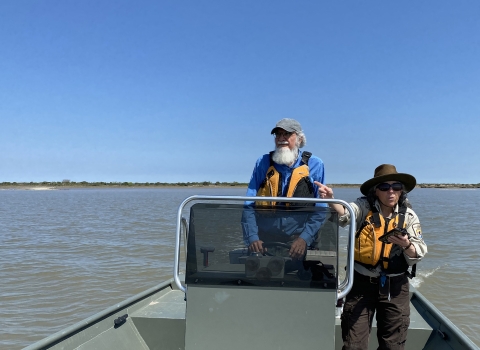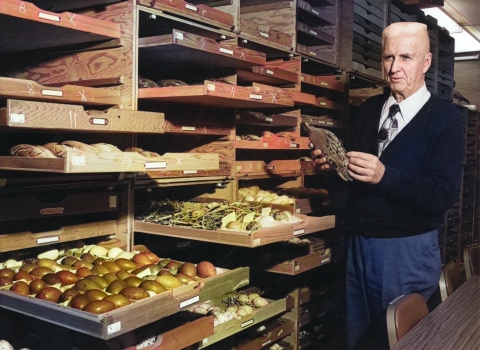Hilo, HI – The U.S. Fish and Wildlife Service awarded the 2012 Rachel Carson Award for Scientific Excellence to Baron Horiuchi for his scientific contributions toward native plant propagation and restoration at Hakalau Forest National Wildlife Refuge, at a small ceremony on Monday, May 6, 2013.
Hakalau Forest NWR is one of the only locations where native Hawai‘i forest bird populations are stable or increasing. Koa forest restoration at Hakalau creates a necessary hedge against extinction for many Hawaiian bird species and serves as a hopeful model of how Hawaiian forest may be restored elsewhere.
“Baron’s work at Hakalau has been instrumental in restoring Hawaiian forest and plants and the resulting increase in forest bird populations,” said Barry Stieglitz, Refuge Supervisor for the Hawaiian and Pacific Islands National Wildlife Refuge System.
“Hakalau Forest supports a diversity of native forest bird species that is unparalleled in the islands, including one of the largest population of i‘iwi, Vestiaria coccinea, and the endangered Hawai‘i kepa, Loxops coccineus.”
Due to Horiuchi’s persistence and ingenuity, the populations of endangered plants such as the lobeliad Cyanea shipmanii, with only three known individuals in the wild, have increased 30-fold, elevating their potential for recovery and reducing their risk of extinction. More than 6,000 other plants of seven endangered species have been propagated from seeds and cuttings, greenhouse grown and out-planted into protected areas. Baron has spearheaded a successful program with many conservation partners and organized volunteer groups over the past 17 years in the management of the Hakalau Forest NWR greenhouse operation; volunteer weekends are fully booked a year in advance. The result of all these efforts is the return of forest habitat.
“We are honored that Baron has been recognized with this award,” said Robyn Thorson, Director of the Pacific Region of the U.S. Fish and Wildlife Service. “His work to return previously thought-to-be-extinct, endangered and unique native plants are an important part of the successful expansion of native forest and habitat for recovery of forest birds at Hakalau Forest National Wildlife Refuge.”
Native forest birds have returned to an area that was open pasture from cattle grazing just 20 years ago. Many of the native bird species, such as ‘apapane, ‘i‘iwi, Hawai‘i ‘elepaio, and Hawai‘i ‘amakihi, are seen regularly within the replanted areas. In addition, the endangered Hawai‘i creeper and akiapōlā


